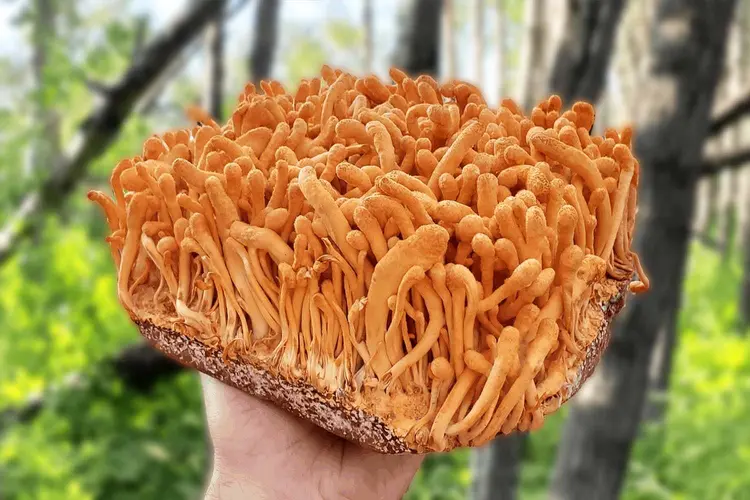
'Zombie' Funghi
by Siha H, Year 12

Zombies, the somehow partially conscious and bloodthirsty undead are a well-known staple of the horror genre; often seen leering out of various Halloween-themed decorations and featuring in many post-apocalyptic movies. However, the ‘living dead’ has always been considered an impossibility. Discoveries in insects suggest otherwise.
A fungus is defined as any group of spore producing organisms feeding on organic matter. Unlike a plant, it doesn’t produce its own food, and so usually fungi depend on its hosts for food or absorb nutrients from the air, so it can grow and eventually reproduce. Parasitic fungi form a symbiotic relationship with their hosts, yet the case is that only the fungi benefit while the health of its host deteriorates. This is often the case when humans develop fungal infections, such as athlete's foot, which causes irritation in the sole. Around one billion people contract a fungal infection yearly, and they usually receive treatment which can kill the fungus and prevent any serious problems caused by it.
Therefore for humans, fungi is a minor issue, yet for some insects, fungi are how zombies become part of reality. Cordyceps is a type of fungus, and it features in the video game and TV show The Last of Us. It’s introduced to us as a deadly fungus, which physically warps people into unrecognisable monsters with one purpose: to spread their sickness. This results in a disastrous, apocalyptic pandemic. In reality, the cordyceps fungus does exist, however it is nowhere near as dangerous to us as it is in the media.
The effects on insects though, are similarly dramatic to the science fiction. The species of cordyceps which typically infects insects, ants or spiders is known as ophiocordyceps unilateralis. Like every living organism, its overall goal as a species is to survive for as long as possible; to reproduce and spread. The way in which it orchestrates this through its insect hosts however, is a scary concept.
The fungus is found in tropical forests, where ants living there may be searching for food when the spores attach to it. Over a few days worth of incubation, often undetected by the rest of the colony, they will penetrate the ant’s exoskeleton, and therefore gain access to its inner mechanisms. At this point, it will also begin to change the ant’s behaviour - the ant will leave its habitat and find the nearest more humid and warm place, not working for its own benefit now, but now trying to reach the fungi’s optimal environment. It will climb around a foot off the ground and attach itself to a leaf, before waiting to die. Meanwhile, the fungus will use the ant’s insides as a fuel source, until several days after its death, where the cordyceps are prepared to spread its infection: the base of the ant’s head develops a fruiting body. This produces spores, and the anatomy of the head allows the spores to be spread far, where it will reach other ants and infect them too.
Ophiocordyceps unilateralis’s most surprising feature is how it can seemingly control the minds of its victims. It in fact does not even reach the brain of the ants. Studies shown by researchers at Pennsylvania State University found that the fungus can have such an extreme degree of control from simply infiltrating the muscles of the ant. The fungus would form microscopic scaffolding-like growths around the bundles of muscle tissue and so be able to move the ant by utilising its nervous system.
As unpleasant as this all may sound, there are approximately over 600 known species of cordyceps, affecting caterpillars and spiders too, and all of these fungi ultimately have the same effect as any other predator of insects: by killing them and keeping their population at a manageable level, the fungus balances ecosystems. The only concern however, is if cordyceps could ever be a problem for humans - are there potential risks of us becoming zombies from ingesting it?
The short answer is no - the fungus cells cannot survive inside a temperature as high as a human body. Additionally, the level of control the fungus has over the bodies of insects was developed over many many years of evolution, and our muscular and nervous systems are far more complex. In fact, cordyceps is often intentionally consumed by people for boosted immunity: it’s harmless, and researchers think it may actually have some health benefits due to high concentrations of vitamin C.
Aside from this specific type of fungus though, fungi are evolving to survive in high temperatures, as a result of global warming, which poses risks - although we may not enter a zombie apocalypse, it is likely that future generations will struggle with more fungal infections in humans. This forms another important reason to be concerned with the sustainability of our resources.





























